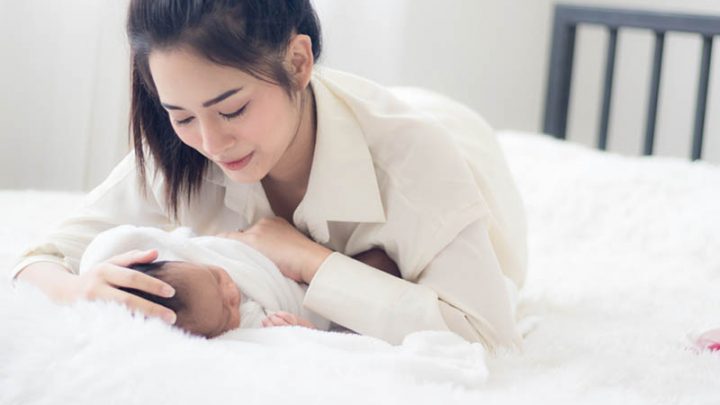Getting your newborn to sleep feels like one of the hardest missions for all first-time parents out there trying to keep their sanity.
If you’re investigating different baby sleep training methods, you’ve possibly come to the conclusion that the shush pat method is best for your infant.
Well, let me tell you that you’re absolutely right.
Even though there are some more effective techniques for older babies, the shush pat method is, without doubt, the most successful when it comes to infants.
So, what is the shush pat method? Why is it so powerful and helpful?
When should you use it? And, most importantly – how do you use it?
Luckily for you, I’ve got you covered. Here are the answers to all of your questions and a step by step guide on how to sleep train your infant.
What Is The Shush Pat Method?
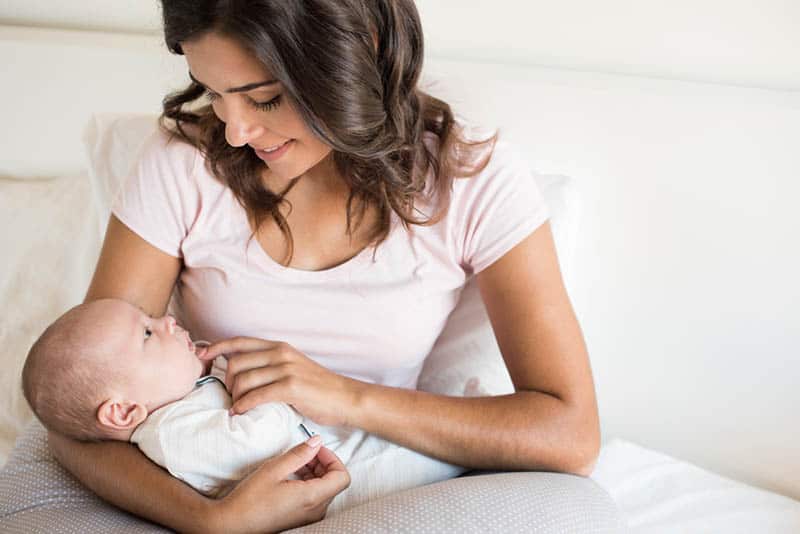
The shush pat method has proven to be one of the most successful sleeping techniques for babies.
By using this technique, you won’t only make your baby go to sleep but you’ll also give them the reassurance and the safety they need.
If you’re a new mom who’s never heard about this technique and have no clue what it might be, it’s all in the name.
The baby whisperer method literally consists of two things: shushing and patting your baby at the same time.
Even if you know nothing about a baby’s sleep, this will probably be the first thing your instincts will tell you to do whenever you’re around a baby who has trouble falling asleep.
That means that this method is completely natural and it’s a part of your relationship with your baby.
It helps you two grow closer to each other and makes your bond stronger.
Always remember that your baby knows much more than you might think.
They sense things and these feelings from their early childhood stick with them.
Therefore, these precious moments you two have together will forever strengthen your connection and they will make your baby feel much safer and calmer.
When Does The Shush Pat Method Work The Best?

This method works best with newborns.
It has proven to be extremely effective with babies until six months of age.
This is when your baby is still trying to adapt to the outside world.
They still need their mommy’s presence, especially when they’re falling asleep.
Nevertheless, as they grow older, the shush-pat method loses its efficacy.
In fact, if you continue using it after the baby’s six months of age, it will probably just be counterproductive.
You see, babies who are older will have a harder time sleeping when you’re still in the room and especially next to them.
Instead of making them calmer, your presence heightens their mood and senses.
Your mere presence (nevermind the interaction between you and your little one) is too much stimulation.
Before you know it, you have a wide-awake child who is ready to play and who is definitely not thinking about sleeping.
Foundation for independent sleeping

You don’t have to use this extraordinary method only when you’re trying to get your newborn ready to sleep.
Besides this primary function, you can use it in many other situations as well, such as teaching your baby to self-soothe.
When your baby is 8-12 weeks old, you should start showing them how to settle without your help.
Of course, this won’t happen overnight since they’re still little and used to your presence but this is the time to start teaching them to fall asleep more independently and eventually on their own and to help them create a sleep routine.
According to some doctors and other experts, babies can be trained to put themselves to sleep when they’re 2 months old.
In fact, by this age, they’re physically capable of having a bedtime routine and sleeping through the night without waking up at all.
But, the keyword here is trained. The best way to do this is to pat and shush your baby while they’re trying to fall asleep.
You can use the shush and pat method just when you want to comfort or soothe a fussy baby.
You’re not actually going to take them into your arms while doing this, so that they still have enough space to settle on their own.
Nevertheless, at the same time, you’re showing them that mommy is there and has their back.
Keeping all of this in mind, it’s pretty clear why this method has proven to be a firm base for your baby’s independent soothing and sleeping in the future.
Falling back to sleep

Even though a two-month-old baby is theoretically capable of sleeping through the night, in practice, their sleep habits are in most cases quite different.
Whether you like it or not, your infant is likely to wake up during the night until they adopt different sleeping habits.
And, it’s unlikely to happen only once during the night: it’s probable that they’ll be waking more times.
You see, when our brain waves shift during sleep, we move from REM to other non-REM phases.
You might not be aware of this but even as an adult, you wake up a couple of times during the night because you move through these cycles.
Nevertheless, your body and mind are so used to this process that you barely remember it in the morning.
It doesn’t interfere with your sleep schedule nor do you have any trouble falling back asleep.
But with babies, it’s different.
They usually wake up hungry especially if you’re still in the process of weaning them off their nighttime breastfeeding sessions.
As these sleep cycles change, so does the baby’s rhythm.
Although the struggle of being woken up by your little ray of sunshine is very real, the bigger problem is the fact that you have to find a way to help them fall asleep again.
After all, as a new mom, you need your share of sleep so it’s natural that this gets exhausting.
Well, the shush-pat technique has proven to be the most effective for helping your baby go back to sleep.
The witching hour
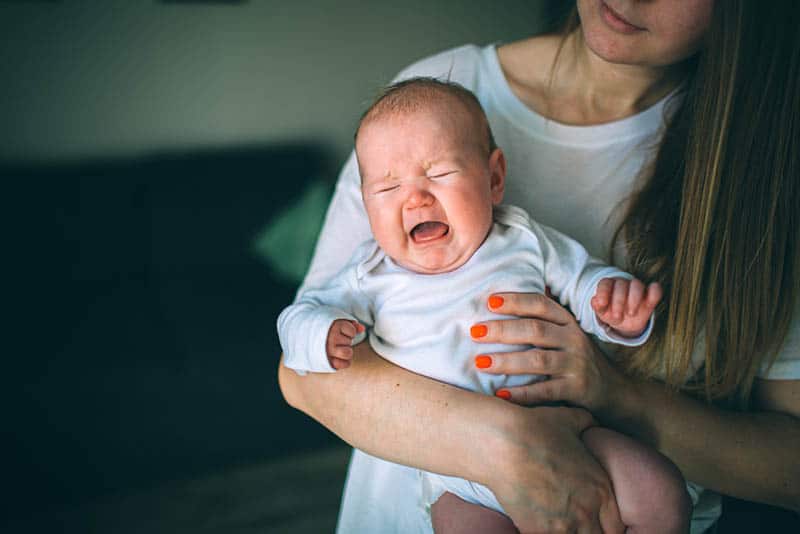
Have you ever heard about the witching hour?
The witching hour is something almost all new babies go through.
It’s a certain time of day when they get all fussy for no specific reason.
Firstly, rest assured that there’s nothing supernatural about this.
In fact, a witching hour has a perfectly reasonable explanation.
It’s usually the time of the day when babies get cranky and nervous because they’re overtired.
Remember that newborns can easily become exhausted.
Instead of them going to sleep, the hormones responsible for the sleep/wake cycle get a little messed up and you’ll likely have trouble soothing the baby.
Also, this is the time of day when most houses are crowded.
The parents come home from work, older children from school or there might even be guests over.
You’re cooking dinner and the whole family is spending time together.
Either way, your baby senses that the rhythm of the day has changed and this is how they react.
It usually happens in the late afternoon or in the early evening, from 5 p.m. to 12 a.m.
Of course, it doesn’t last this long but it is during this period of time that you’re most likely to notice it.
A witching hour is likely to start when your baby is one week old and ends at the fourth or fifth month.
Now that you have it all figured out, we’ve come to the most important question of how to soothe your infant during this witching hour.
Or, during these witching hours, I should rather say, because in most cases, this lasts a bit longer than 60 minutes.
Well, this is another situation where the pat and shush method comes in handy.
I assure you that this technique will bring you the most success.
No-cry

How many times have you been in a situation where your baby can’t seem to stop crying?
As an inexperienced mom, your first reaction is probably to panic and think of the worst.
After all, you know that your little one has been fed and changed and teething is not the issue.
They’ve had enough sleep and you don’t know what else to do to make them feel better.
When your baby is crying, they’re trying to tell you something.
Sometimes, you figure out their needs right away but there are also times when you need a little more time to understand your precious one’s language.
But what you should keep in mind is that sometimes, your baby isn’t hungry and they don’t need their diaper changed.
Neither are they too hot or too cold.
There are times when your little one is just bored or needs a cuddle.
They need you to comfort them and to be as close to them as possible.
This is another scenario where the shush and pat method is the best way to go.
When you shush your baby, you produce a calming sound and when you pat them, you produce a certain movement and initiate physical contact.
Before you know it, they’ll put all their focus on that sound and movement.
Soon enough, they’ll forget the reason for their crying and eventually, will stop.
Why Should You Use The Shush Pat Method?
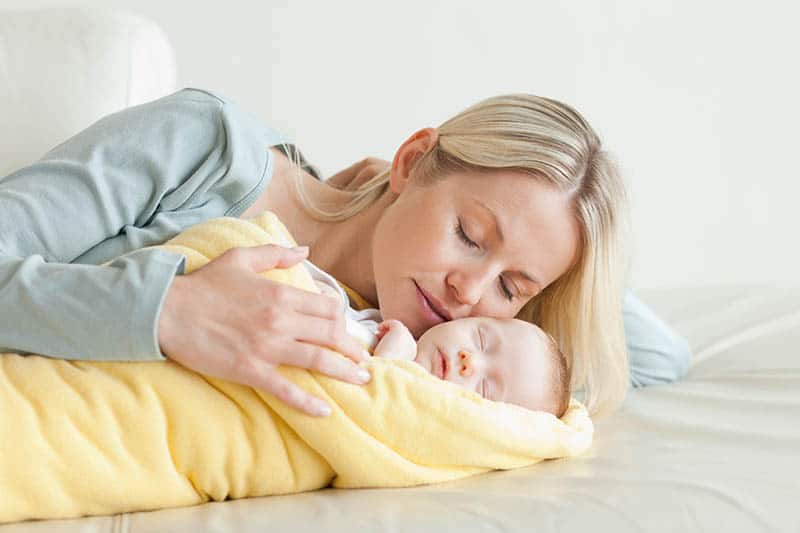
There are numerous sleep-training methods that work for babies.
But what makes the shush pat method the best and the most effective of them all?
Why is it so effective with newborn sleep?
Well, you have to remember that your baby has spent 9 months in your womb.
From their perspective, they’ve come to this world out of nowhere so it makes sense for them to have trouble sleeping from their first night.
Even though you’re still there, you have to admit that the surroundings are quite different compared to the womb.
Well, the shush pat method imitates the womb’s surroundings and it reminds the baby of the place where they felt safest.
When you’re patting the baby’s bottom or back, their head will move up and down.
That’s a clear sign that they’re enjoying your rhythm as they’re moving the same way they did in the womb.
The same goes for the shushing sound.
The white noise reminds them of the womb, the baby recognizes it and connects it to the peace they felt during that time.
A Step By Step Guide For Shush Pat Method
Even though you might assume that there’s nothing easier than shushing and patting a baby – trust me, you’re wrong.
To get maximum success, there’s an exact technique and order in which this should be done.
Putting the baby down

First and foremost, it’s crucial to place your baby in the right position before you start.
You can put them on their side either in a cot mattress or a baby cradle or hold them in your arms.
In most situations, it’s utterly irrelevant on which side you place the baby.
But, if they suffer from gastrointestinal reflux, it’s been proven that it’s better to keep them on the left side, especially after breastfeeding.
Don’t forget to support the baby’s head and neck with your hand when you are putting them down.
The rest of your forearm serves as a support for the baby’s back.
You can use your other hand to adjust the baby’s head and neck while holding the baby tilted slightly forward.
When you have placed them in the cot or crib, place a rolled-up blanket in front of their tummy to prevent them from rolling forward.
Once your little one is positioned correctly in their cot or cradle, you will have your hands free for patting.
Alternatively, if you are choosing to follow this method while holding your little one, you will use your free hand to pat.
It’s important to note that this method is generally far more effective with your little one lying in their cot or crib.
Patting

Now you’ve come to the main part. Start by gently patting the center of your baby’s back and slowly move clockwise.
If you’re still holding your little one, do this with your other, free hand.
Each one of your motions should have a balanced pace.
Try following the rhythm of your baby’s crying.
The trick is to slow down the speed and reduce the strength of the patting as your baby starts to calm down.
On the other hand, if your little one is quite upset, pat him or her faster and with more firmness.
Pay special attention to the center of the baby’s back.
This motion has proven to be the most efficient when it comes to soothing the baby.
Patting a baby that has reflux
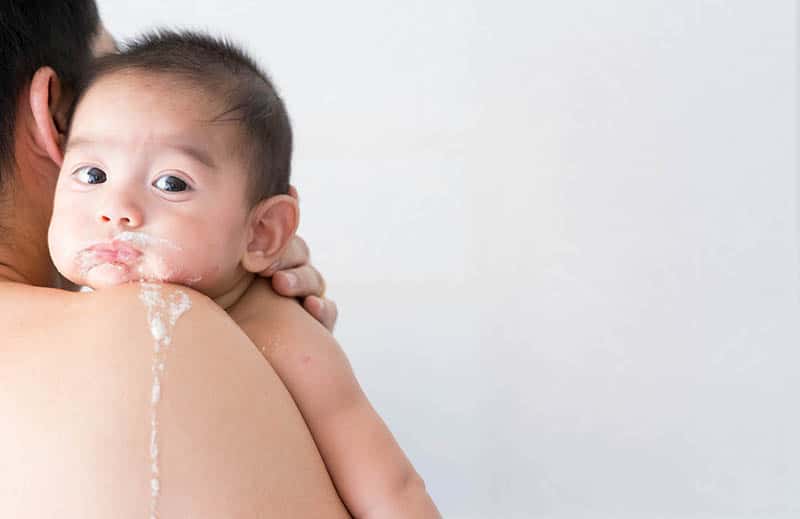
I’ve already discussed the importance of the shush and pat method for all babies but it is especially handy for those who suffer from acid reflux.
If this is something your little one experiences, you know how difficult it can be to solve.
In this case, the best thing you can do is to pat your baby’s bottom.
You see, your baby can accidentally inhale or swallow some excess air while breastfeeding.
Well, that air has to be expelled otherwise, they’ll have trouble with reflux or with hiccups after they breastfeed.
When you pat their bottom and lower back with upward movement, you help the baby expel that air.
To be precise, you help them burp and therefore solve their reflux problem.
This is something you should be doing even after feeding a sleeping baby.
When this happens, there is no need for the shushing part, but you should certainly continue with the patting in this rhythm.
Trust me, it will save you a lot of trouble later as your baby won’t wake up bothered by these painful gasses.
Shushing
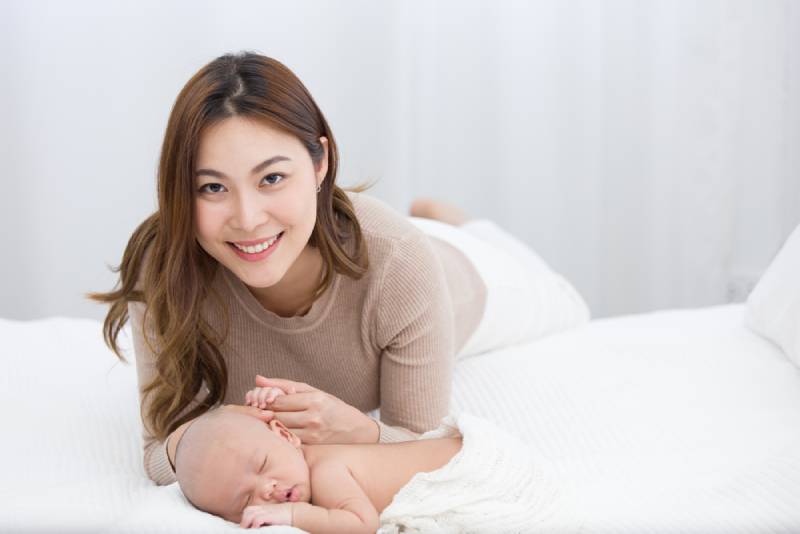
The shushing doesn’t come after the patting – the two actions happen simultaneously.
The word says it all: it’s your job to produce a shushing sound.
The key is for this sound to never be interrupted.
The baby should hear this sound in a soothing, calming rhythm.
Don’t produce the noise directly into the baby’s ear but don’t make it too quiet either, otherwise, you won’t create the desired effect.
The perfect noise level is to not be louder or quieter than the sound of an average vacuum cleaner.
There are different ways to produce this shushing sound. The best is to use your voice.
The advantage is that your baby will recognize it.
But if you get tired of the constant shushing, a white noise machine or an app will do just fine.
Don’t forget that the patting and the shushing should follow a similar pace and rhythm.
Putting the baby down (if you kept them in your arms)
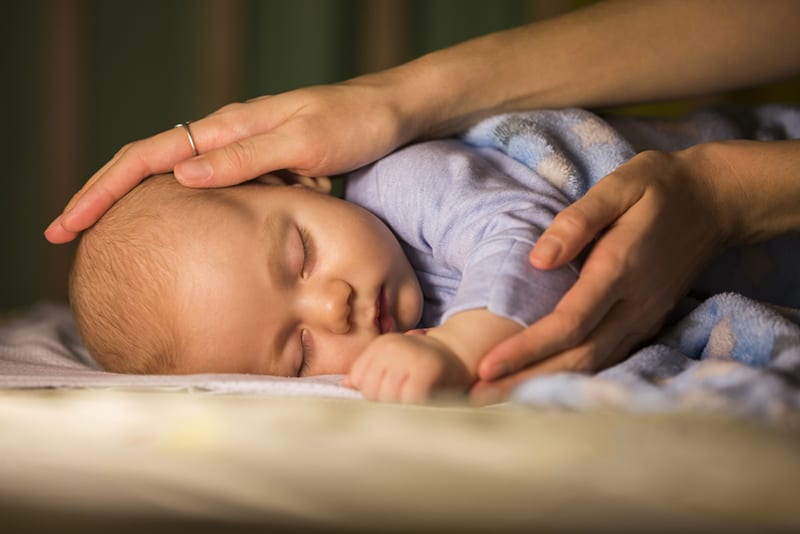
Even though applying the shush and pat method means that your baby doesn’t leave the crib, sometimes it’s simply necessary to pick them up.
This happens when you can’t seem to soothe the baby by only patting and shushing them while they’re lying down.
The problem is, once they’re calm, how do you put your baby back in the crib without waking them?
After all this hard work, you have your baby just where you want them.
They’re clearly much calmer than before and their eyes are shutting without you swaddling them.
The tiredness is taking over but he or she still hasn’t fallen asleep.
They’re still in your arms and you’re too scared to move an inch.
Let’s face it, the last thing you want to do is disturb them in any way. In that case, you’ll have to do everything all over again.
The question is how to place your little one in their bed without disturbing them and making one of those dreaded accidental parenting mistakes.
Well, the number one rule is not to stop with the motion and the sound you’re making once you get your baby sleeping.
Slowly place your little one in their crib, while constantly patting their back and producing the shushing sound.
The important thing here is to keep them in the same position.
Put them in their bed on their side and don’t allow them to roll over on their back or stomach.
You’ll achieve this with the help of your free hand that is supporting your little one.
Slowing down

You might think that your job is now done. After all, your baby is almost asleep so why would you continue with the shushing pat method?
The trick is to keep up with the patting and shushing until your baby falls asleep.
But now, it’s time to slow down the pace of both the patting and the shushing.
You don’t have to keep them on their side forever.
The moment you notice that your little one has fallen asleep, it’s safe to let them roll over onto their back.
Once you do that, wait to see whether or not they’re firmly asleep.
If they are, leave the room immediately and don’t give them any further stimulation.
But if the baby starts waking up, pat and shush them for a little longer without doing anything else.
Other Popular Sleep-Training Methods

Even though the shush pat method is the best one for newborns, there are other sleep-training methods that have also shown great results, particularly when your baby is getting overtired.
Here is a brief overview of each of them.
Ferber Method
This technique was named after the pediatric sleep expert, Dr. Richard Ferber.
For more than 30 years, his main area of expertise has been different sleep disorders in children, and his method consists of training your little one to self-soothe.
Basically, the Ferber method means that you should let your baby cry when they’re trying to go to sleep.
Of course, you won’t let them cry forever – just for a certain amount of time before you give them comfort.
This technique is one of the Cry it out or CIO methods.
When it’s bedtime, you put your baby in their crib or bassinet while they’re still completely awake.
According to the doctor, the best time to start practicing this method is when your baby is 6 months old.
At first, you put down your baby and let them cry for 5 minutes before picking them up, patting them, or giving them any other kind of response.
The trick is to gradually increase these crying intervals.
After you’ve let them cry for 5 minutes, the next day, you should leave them alone for 7 minutes and so on.
Whenever you enter the room to soothe them, you shouldn’t stay there for more than a couple of minutes.
Then, leave them alone again and don’t come back until 8 or 9 minutes have passed.
This way, you’re not only teaching your baby to fall asleep independently.
You’re also forming a bedtime routine.
The number one problem with this method is, without a doubt, parents.
You might have a hard time not entering the room to soothe your baby when you hear them crying.
Don’t worry, this is how every parent feels. That’s why it’s difficult to be persistent and consistent with this method.
But trust me, once you realize that you’re doing it all in your baby’s best interest, you’ll see that this technique actually works wonders.
Chair method

The chair method is not as “brutal” for most parents but it still includes moving away from your baby a little bit every day.
Basically, you sit, in a chair, next to your little one while they’re trying to sleep.
But, you don’t sit there from the very beginning.
Instead, your job is to place your baby in their crib while they’re still awake and then leave.
When you hear them crying, reenter the room and sit next to them in a chair.
At first, you’re allowed to pat them but don’t pick them up.
After a few days, it’s time to move your chair a little further away from the crib.
You’re still close to them but you’re no longer able to pat them as you’re too far away.
Nevertheless, this is when you can shush the baby until they fall asleep.
The next step is to reduce the shushing to a minimum as well.
At the same time, move the chair even closer to the door.
After some time, it’s safe to exit the room completely.
When you’re checking up on your little ray of sunshine, make sure they don’t see you.
Or at least do it standing in the doorway, making it clear that you won’t approach them, even if they’re crying.
Fading
The most important thing about this method is to pay close attention to your child’s needs.
In this case, they’re the one who determines when it’s time to go to sleep.
Of course, your baby can’t literally tell you that they need to sleep nor can they ask you to place them in their crib.
But they can yawn, rub their eyes or turn their head when they’re ready to go to bed.
When you see the signs, you can predetermine their sleep routine.
Make a schedule around that hour and be ready to start the sleep preparation the next day at the same time.
This approach provides a great opportunity to shift your baby’s bedtime.
Every day, move the bedtime 15 minutes or so earlier until you reach your goal and have your little munchkin asleep at the time you think is best for them.
If they start crying, wait to see if they calm down on their own.
If that doesn’t happen, engage in the pick-up put-down method.
Basically, if you see that your baby isn’t settling down, it’s safe to pick them up.
Cuddle them in your arms for a few minutes but don’t cuddle until they fall asleep.
Instead, place them back in their crib once they’ve settled down a little.
Continue with these intervals until the baby is asleep.
If you’re persistent enough, soon you’ll have less picking up time and your baby will learn how to fall asleep without your assistance.
Final Thoughts
You may have already known about all the different methods of getting your baby to sleep but hopefully, I have convinced you that the best option for a newborn is the shush pat method.
Now, all you have to do is follow this guide carefully and see it do wonders.
Before you know it, your little one’s bedtime routine will be a walk in the park!
Not only that but having your baby sleep regularly will also help you get more rest and be more productive the next day.
Good luck mammas, and sweet dreams!
References:
• Ferber, R. (2006) Solve Your Child’s Sleep Problems: New, Revised and Expanded Edition. Touchstone.
Like this post? Please share or pin it for later. You can also stay in the loop and follow us on Facebook, Instagram or Pinterest.
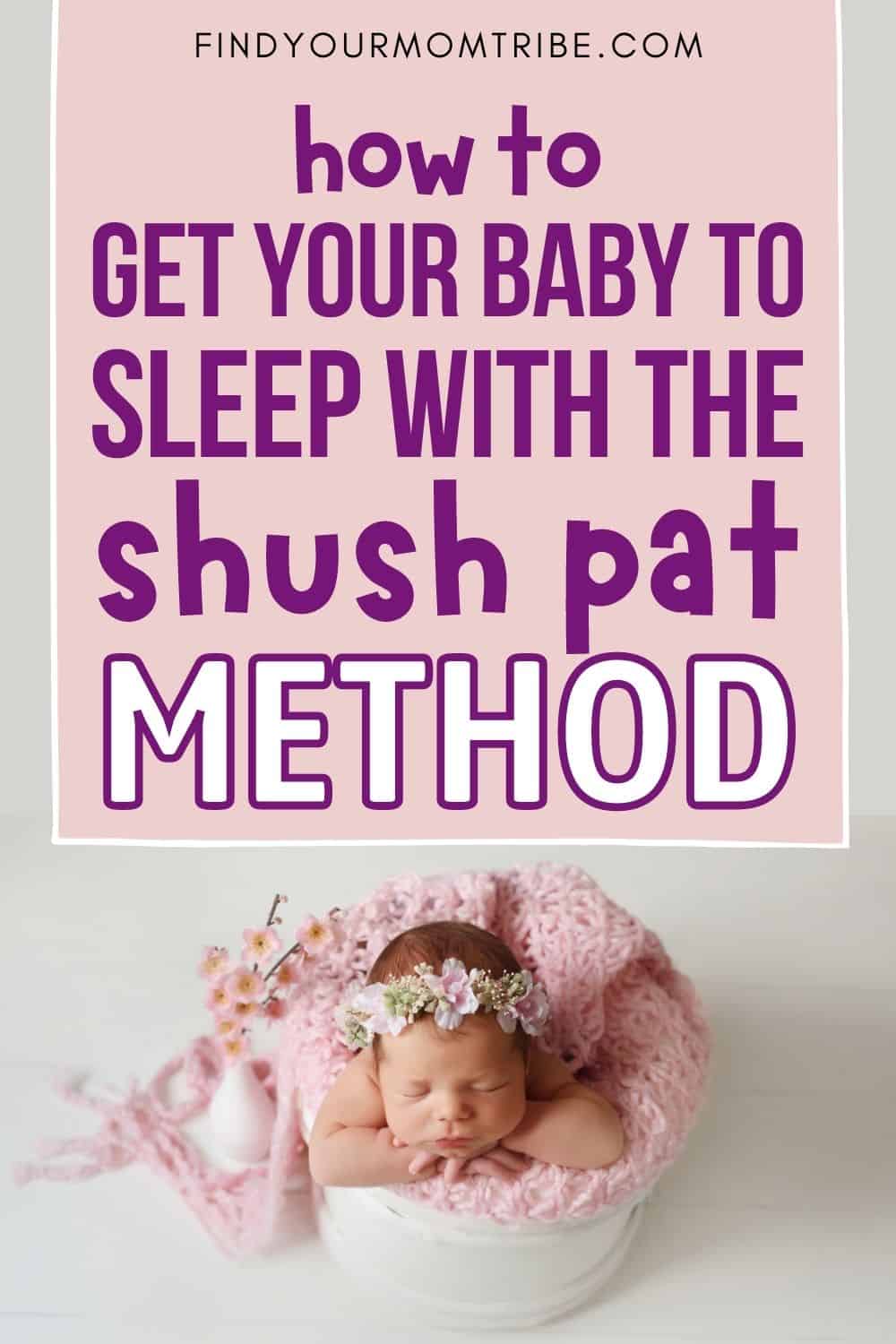
We love honesty! Find Your Mom Tribe is an Amazon Associate and we earn from qualifying purchases through affiliate links at no extra cost to you. Please see our full Amazon Affiliate disclosure for more information.

